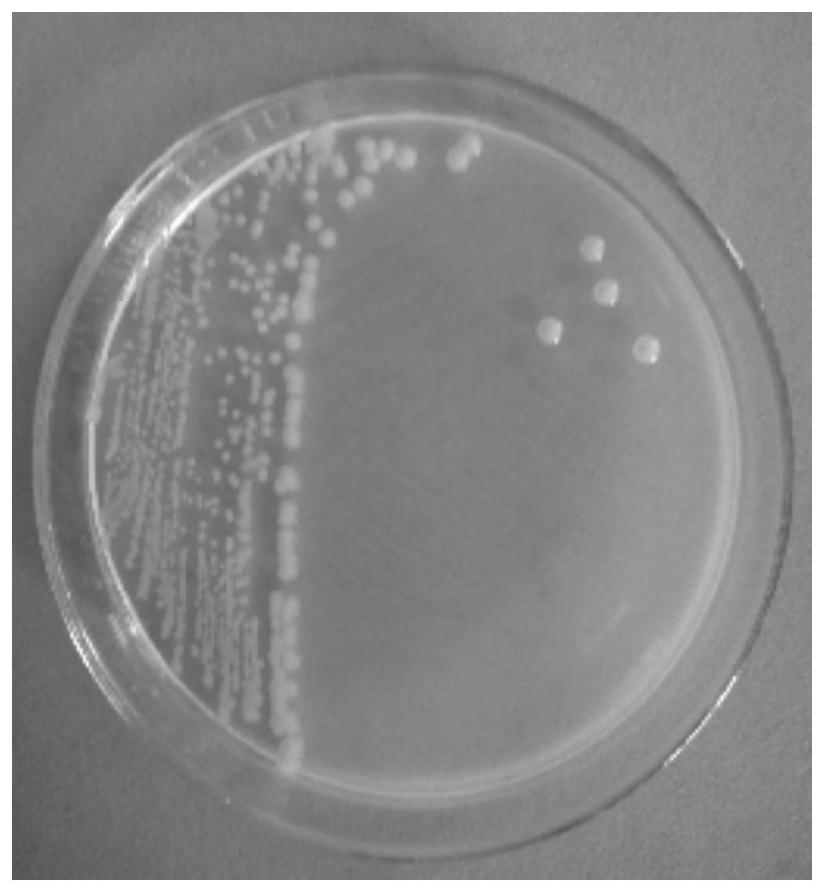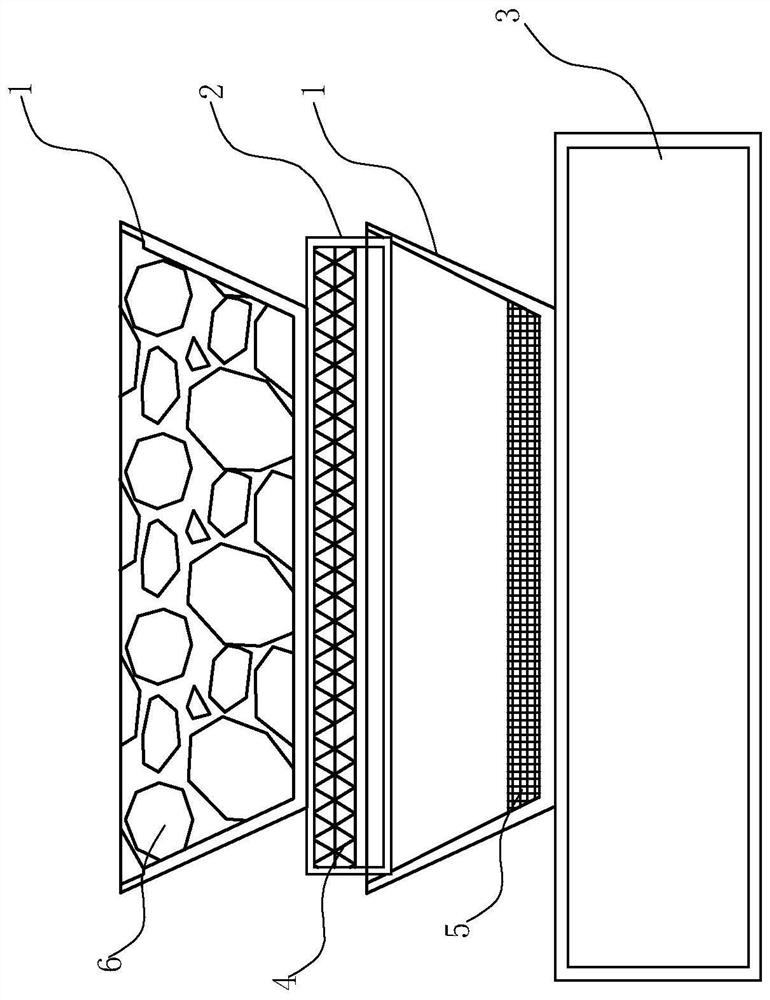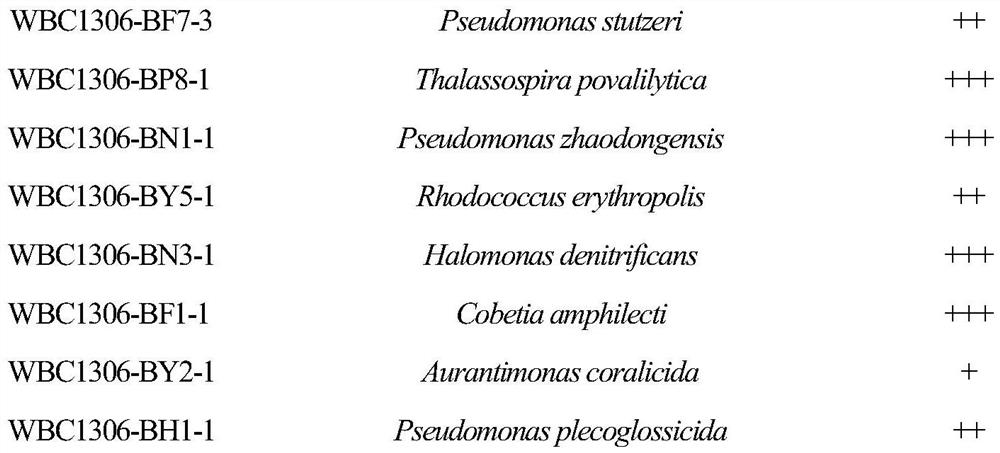A marine degrading bacterium capable of degrading polycyclic aromatic hydrocarbons and its application
A bacterial strain, Halomonas technology, applied in the direction of bacteria, microbe-based methods, microbes, etc., can solve problems such as restricted development and limited resource reserves
- Summary
- Abstract
- Description
- Claims
- Application Information
AI Technical Summary
Problems solved by technology
Method used
Image
Examples
Embodiment 1
[0017] (1) Collection of samples:
[0018] The mud sample is a sediment mud column collected by the East Pacific Combination Area WBC1306 (Side W154.235, latitude N10.016) at the East Pacific Combination Area.
[0019] (2) PAHS dissolution:
[0020] The polycyclic aromatic hydrocarbon compound is added to the triangular bottle of high pressure sterilization, and the acetone solution is added to the 37 ° C shaker overnight to the propanone solution, and the bacterial medium I is added. Polycyclic aromatic hydrocarbon compound naphthalene, Philippine, pyrene, fluoranthene final concentration is 200 mg / l, 100 mg / l, 50 mg / L and 20 mg / L.
[0021] The bacterial medium I is: 0.10 g of citrate, NaCl 19.45g, MGCL 2 5.90g, NA 2 SO 4 3.24G, CACL 2 1.80G, KCL 0.55g, Nahco 3 0.16g, KBR 0.08G, SRCL 2 34.00mg, H 3 BO 3 22.00mg, sodium silicate 4.00mg, NAF 2.40mg, (NH 4 ) NO 3 1.60mg, NA 2 HPO 4 8.00 mg, 1 ml of trace elements, 1 ml of vitamin composite solution, deionized water 1L, pH 7....
Embodiment 2
[0030] (1) Preparation of PAHs Solid medium: sublimation method:
[0031] Due to the strong hydrophobicity of the PAHs compound, only the physical properties of the organic solvent, resulting in the polycyclic aromatic hydrocarbons to be added to the solid medium in a usual method. To this end, polycyclic aromatic hydrocarbon solid medium is obtained by ease of sublimation of polycyclic aromatic hydrocarbon compounds.
[0032] The specific method steps are as follows:
[0033] (1) First fabrication of two aluminum dishes, the diameter of the dish is the same as the diameter of the petri dish, so that it can be exactly the aluminum disc.
[0034] (2) Prepare a constant temperature heater;
[0035] Place the constant temperature heater in the fume hood and placed the aluminum dish to preheat it half an hour.
[0036] (3) Take a proper amount of the polycyclic aromatic hydrocarbon compound in the bottom of the aluminum disc, and placed the plate containing the medium I above the alum...
Embodiment 3
[0040] Preliminary determination of the ability to degrade PAHS using a PAHs Philippine solid medium
[0041] Solid medium I is prepared, and a layer of philipphi-plated compound is plated with a layer of phipples by sublimation method. The previously enriched obtained a strain was inoculated in the II liquid medium to be placed in a shaker (25 ° C) 48 h. Take high-pressure sterilization of 5 mm sheet of sheets of 5 mm in the bacterial liquid to be placed in a 25 ° C thermostatic incubator. Depending on whether the strain grows on the PAHS solid medium and the transparent circle around the colony, the ability of the strain degrades the ability of PAHs. If it is grown, it will illustrate that the transparent circle appears to PAHS, such as the transparent circle around the colony, indicating that the strain has a PAHs degradation capability. Conversely, if there is no transparent circle around the colony, the strain does not have multi-ring aromatic hydrocarbon degradation capabili...
PUM
 Login to View More
Login to View More Abstract
Description
Claims
Application Information
 Login to View More
Login to View More - R&D
- Intellectual Property
- Life Sciences
- Materials
- Tech Scout
- Unparalleled Data Quality
- Higher Quality Content
- 60% Fewer Hallucinations
Browse by: Latest US Patents, China's latest patents, Technical Efficacy Thesaurus, Application Domain, Technology Topic, Popular Technical Reports.
© 2025 PatSnap. All rights reserved.Legal|Privacy policy|Modern Slavery Act Transparency Statement|Sitemap|About US| Contact US: help@patsnap.com



